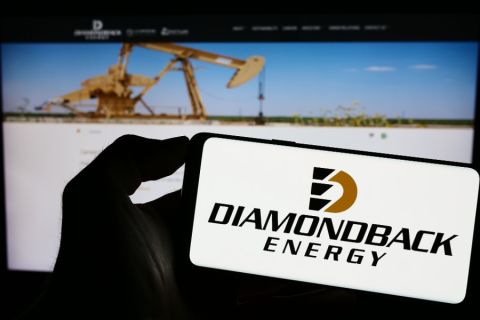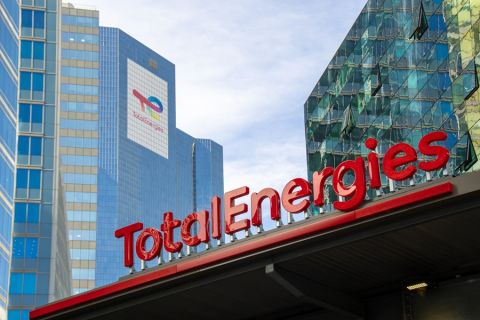As operators push into greater water depths, drilling engineers are required to design wells reaching deeper objectives through sharp pore pressure transition zones and through higher differential pressures in depleted zones. Many operators are responding to the challenges by incorporating solid expandable tubular (SET) technology into their well plans.
This has enabled preservation of desired hole size and efficient completion of projects previously deemed cost-prohibitive and unreachable. Short-term, the cost of planning in the use of expandable tubulars may be a hindrance for some operators, but long-term, the benefits have proven invaluable.
In the harsh working environment of the North Sea, for example, a major operator was challenged with reducing the time needed to reach total depth (TD) with adequate hole size in a series of new wells being drilled in an established oil field. Solid expandable tubulars enabled the operator to save casing points and preserve hole size while drilling through unstable shale formations and depleted zones. The systems ranged in length from ~500 to 2,000 ft (~152.5 to 610 m) with shoe depths of ~8,000 to 8,600 ft (~2,440 to 2,623 m). By planning the systems into the wellbore designs, drilling time to TD was reduced to an average of 60 days compared to more than twice that time needed before an expandable solution was available. Use of expandable tubulars also eliminated the need for costly isolation tests. The tubulars saved approximately US $12 million per well — a direct result of fewer rig days and consumables such as cement, mud and lost circulation materials.
In some cases operators have seen overall well costs reduced by as much as 30% through decreased use of consumables. In addition, operators are becoming better stewards of the environment as they make a much smaller footprint when they adopt more efficient drilling methods.
Practical, proven systems
SET systems have proven to be a practical and enabling technology. With nearly 700 installations to date worldwide, Enventure Global Technology has applied SET to both casing repair projects and drilling applications. Since 1999, there have been 364 applications in the United States, 139 in the Asia Pacific region, 147 in the Middle East and Africa, and 20 across Europe. While casing repair is one application, this article will focus on expandable technology in the drilling environment, where there have been more than 350 installations. Of these, nearly 100 jobs were installed with expandable casing 9 5/8 in. or larger and more than 275 installations with expandable casing 8 5/8 in. or smaller.
Where to run an expandable casing string is a critical decision point. This has become known as the difference between hole size preservation and hole size survival, or the point where the opportunity versus need is determined.
The far left curve in Figure 1 illustrates this critical decision point. This represents the technical limit for no trouble zones or flat time. The first well is shown (far right curve) by the blue day/depth curve. One can see the non-productive time associated with the trouble zones. An expandable was run lower in the well, where it is used as a contingency liner, and was a key enabler to reaching TD with sufficient hole size. However, the second well shown by the red day/depth curve had an expandable liner planned higher in the well with dramatic results in drilling time reduction. In terms of daily rig costs alone, a reduction in drilling time of 65% from 140 days to 48 days may save an operator as much as $50 million on a single well. When those costs are expanded to include people and other common operating expenses, this figure can increase significantly, and it prompted one major operator to embark on a study for a closer look at the determining factors for making the decision to use expandable tubulars.
5-year study
A major operator conducted a 5-year study on more than 200 wells and determined that the point at which most non-productive time (NPT) occurs is below 13 3/8-in. casing. This was derived from analytical and statistical data from day-to-day rig operations.
Information obtained from previous expandables applications was used to populate a database for reference. This provided the strategic basis for optimizing processes and technology that enabled the most efficient well design. Expandable tubulars had the greatest impact when they were used higher in the well bore to maintain larger hole size at greater depths. Therefore, when the operator used expandable casing in tandem with the latest subsea wellhead equipment, a corresponding increase in the number of casing strings available was realized.
Whether in sub salt formations, high-pressure/high-temperature (HP/HT) wells or low-margin trouble zones, expandable casing technologies can be used. Whenever hole size is optimized, the rate of penetration also increases along with drilling efficiencies. Empirical data has proven that an 8 1/2-in. to 12 1/4-in. hole size provides the highest drilling efficiency. Many ultradeep wells with target objectives of 30,000 ft (9,150 m) and greater require eight or more casing strings to reach TD with an acceptable hole size. Without the capacity to run additional casing strings, the potential for borehole instability increases with subsequent non-productive time.
Case histories
In a shallowwater HP/HT deep shelf well in the Gulf of Mexico an operator installed a 9 5/8-in. by 11 3/4-in. expandable system, which provided enough hole size for conventional-sized drilling and formation evaluation tools. With the ability to drill to ~25,000 ft (~7,625 m) with a bottomhole temperature of 500°F (259.74°C), the operation pushed the technology limit. No other operator had ever drilled this deep in the area, thus allowing for previously undrilled formations to be evaluated.
In offshore Indonesia eight planned expandable systems were installed in six different wells. The expandable systems were used with surface stack technology in subsea applications. All eight were successfully installed, realizing a 100% success rate. The results enabled the operator to conclude that in a planned design mode, more time is available to design, build and ship the equipment. Additionally, hole conditions are usually more conducive to running the liner than in an unplanned mode where in most cases the well bore has deteriorated.
Finally, a major operator drilling a well in 6,650 ft (2,028 m) of water in the Gulf of Mexico was experiencing losses. Two 9 5/8 by 11 3/4 in. expandable openhole liner systems were installed with the deepest at 26,450 ft (8,067 m). This gateway application of the technology allowed the operator to forge ahead in drilling a 9 7/8-in. by 11 3/4-in. exploratory tail to 29,452 ft (8,982 m).
A major operator in the North Sea was faced with isolating a low fracture-gradient zone while preserving hole size to allow an optimal completion. The well was cased using an expandable 11 3/4-in. by 13 3/8-in. system set through a window below regular 13 3/8-in. casing. The liner was run to bottom and expanded without difficulties, completing an 11 3/4-in. openhole installation at ~3,700 ft (~1,128.5 m). This helped the operator avoid lost circulation problems and allowed subsequent placement of the planned 9 5/8-in. casing as close as possible to the reservoir. This facilitated a larger, multizone gravel pack completion using 6 5/8-in. production screens as opposed to a smaller, single completion with 4 1/2-in. screens. An estimated 10% production gain was realized from the larger, more effective completion.
Conclusion
Proactive use of expandables as a risk reduction strategy is becoming widely accepted. This will become more the case as emphasis is placed on hole-size preservation rather than hole-size survival. Solid expandable tubulars are part of a larger solution for drilling through and beyond trouble zones in ultradeep offshore wells.
Recommended Reading
OGInterview: Building EIV Capital’s Midstream Investment Strategy
2024-05-01 - Midstream-focused EIV Capital has added non-operated assets and transition projects to its portfolio as a sign of the times.
NOG Lenders Expand Revolving Credit Facility to $1.5B
2024-04-30 - Northern Oil and Gas’ semi-annual borrowing-base redetermination left its reserved-based lending unchanged at $1.8 billion.
Imperial Oil Names Exxon’s Gomez-Smith as Upstream Senior VP
2024-04-30 - Cheryl Gomez-Smith, currently director of safety and risk at Exxon Mobil’s global operations and sustainability business, will join Imperial Oil in May.
Diamondback Stockholders All in for $26B Endeavor Deal
2024-04-29 - Diamondback Energy shareholders have approved the $26 billion merger with Endeavor Energy Resources.
TotalEnergies Eyes Suriname FID by Year-end 2024
2024-04-29 - France’s TotalEnergies and U.S. partner APA Corp. look to place their long lead orders ahead of a final investment decision related to their joint development offshore Suriname in Block 58.





